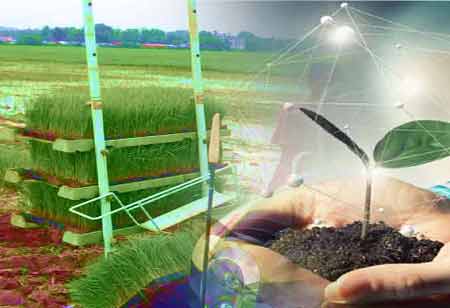Thank you for Subscribing to Agri Business Review Weekly Brief
The Acceptance Of Precision Agriculture Technologies
The appearing technologies have brought to light the effect of intensive farming on biodiversity.

By
Agri Business Review | Saturday, December 17, 2022
Stay ahead of the industry with exclusive feature stories on the top companies, expert insights and the latest news delivered straight to your inbox. Subscribe today.
When embracing a solution, a farmer must feel the interaction and connection level with the solution donor.
FREMONT, CA: The appearing technologies have brought to light the effect of intensive farming on biodiversity. Currently, almost 70% of freshwater is utilized for agricultural purposes. Furthermore, the pesticides and fertilizers utilized to control diseases and magnify yield affect the crop quality and the food chain. Therefore, many countries have passed ordinances to control water and chemical usage to reduce the detrimental practices utilized in agriculture.
The innovations based on the need for sustainable practices have given rise to precision agriculture (PA), a new procedure that employs the internet of things (IoT), machine learning (ML), machine vision, and artificial intelligence (AI). Over a couple of years, manufacturers have begun building equipment powered by some form of PA components.
A greenhouse has been an intensive farming method for the last few years. Although useful to some extent, it is not free of issues. Greenhouse contraction is more costly, demanding high maintenance and climate regulation. Besides, greenhouse crops retain ground quality, humidity, and ventilation disorders. The farmers stay informed of crop health and take the mandated steps for preventing and curing. Nevertheless, many greenhouse growers have taken up PA, allowing them to decrease water and fertilizer usage by almost 30%.
When embracing a solution, a farmer must feel the interaction and connection level with the solution donor. Most PA solutions come as a complete package, but conducting a pilot test will secure the proper adaptation required for maximum efficiency.
Still, many obstacles impede the implementation of PA. The data collected from the sensor and image analysis requires to be precise. In irrigation, a controlled amount of water is supplied to the crop at intervals. Nevertheless, water usage requires to be precisely measured to evade wastage. Electronic sensors in the greenhouse and open farming can enable image analysis, stimulating seamless automation of agriculture processes.
Although most of the studies were about theoretical models and pilot tests, it has excited the optimism for PA solution providers to create innovative equipment and present alternatives to sustainable agricultural practices.





